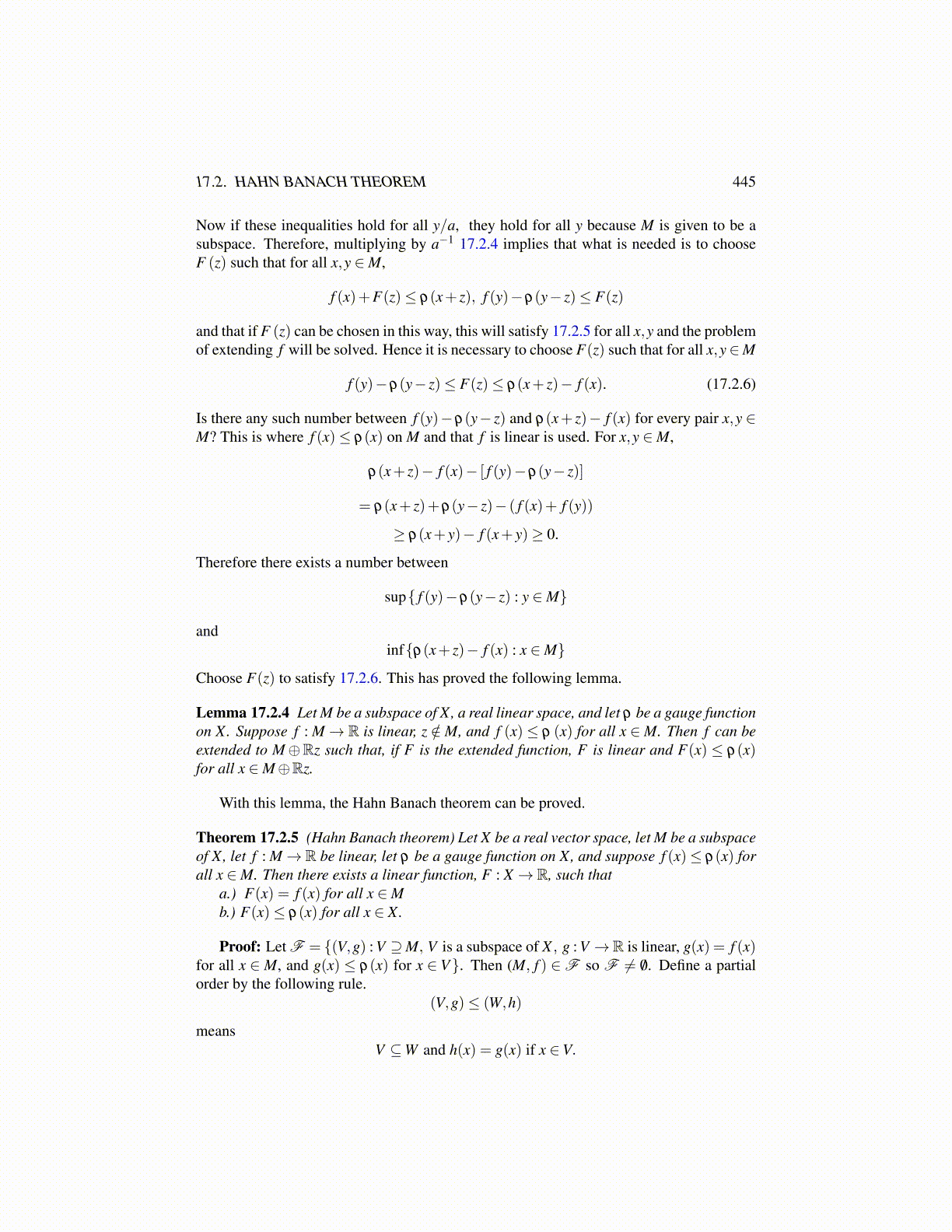
17.2. HAHN BANACH THEOREM 445
Now if these inequalities hold for all y/a, they hold for all y because M is given to be asubspace. Therefore, multiplying by a−1 17.2.4 implies that what is needed is to chooseF (z) such that for all x,y ∈M,
f (x)+F(z)≤ ρ(x+ z), f (y)−ρ(y− z)≤ F(z)
and that if F (z) can be chosen in this way, this will satisfy 17.2.5 for all x,y and the problemof extending f will be solved. Hence it is necessary to choose F(z) such that for all x,y∈M
f (y)−ρ(y− z)≤ F(z)≤ ρ(x+ z)− f (x). (17.2.6)
Is there any such number between f (y)−ρ(y− z) and ρ(x+ z)− f (x) for every pair x,y ∈M? This is where f (x)≤ ρ(x) on M and that f is linear is used. For x,y ∈M,
ρ(x+ z)− f (x)− [ f (y)−ρ(y− z)]
= ρ(x+ z)+ρ(y− z)− ( f (x)+ f (y))
≥ ρ(x+ y)− f (x+ y)≥ 0.
Therefore there exists a number between
sup{ f (y)−ρ(y− z) : y ∈M}
andinf{ρ(x+ z)− f (x) : x ∈M}
Choose F(z) to satisfy 17.2.6. This has proved the following lemma.
Lemma 17.2.4 Let M be a subspace of X, a real linear space, and let ρ be a gauge functionon X. Suppose f : M→ R is linear, z /∈M, and f (x)≤ ρ (x) for all x ∈M. Then f can beextended to M⊕Rz such that, if F is the extended function, F is linear and F(x) ≤ ρ(x)for all x ∈M⊕Rz.
With this lemma, the Hahn Banach theorem can be proved.
Theorem 17.2.5 (Hahn Banach theorem) Let X be a real vector space, let M be a subspaceof X, let f : M→R be linear, let ρ be a gauge function on X, and suppose f (x)≤ ρ(x) forall x ∈M. Then there exists a linear function, F : X → R, such that
a.) F(x) = f (x) for all x ∈Mb.) F(x)≤ ρ(x) for all x ∈ X.
Proof: Let F = {(V,g) : V ⊇M, V is a subspace of X , g : V →R is linear, g(x) = f (x)for all x ∈ M, and g(x) ≤ ρ(x) for x ∈ V}. Then (M, f ) ∈F so F ̸= /0. Define a partialorder by the following rule.
(V,g)≤ (W,h)
meansV ⊆W and h(x) = g(x) if x ∈V.